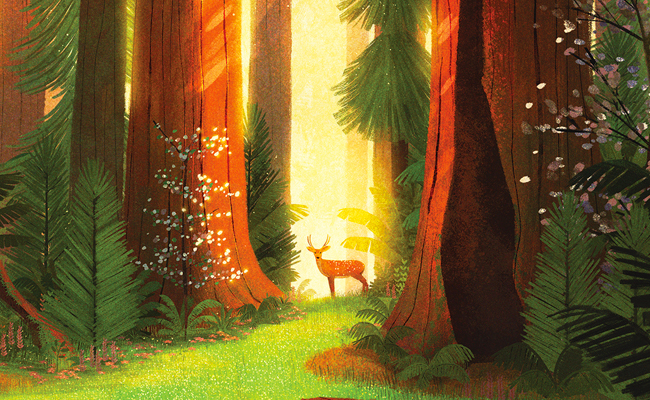
If you’ve been lucky enough to visit one of America’s National Parks –and we. love. so. many. of. them. — you may find yourself skimming Insta photos and tracking hashtags in an attempt to recapture the feel of these stunning natural wonders. JP Boilard, the creative director of the Fifty-Nine Parks Project, understands this transportive power of imagery. He gets how it can conjure our impressions of a destination that we found personally significant. That’s why he and his team have set out to depict all 59 US National Parks through screen-printed posters.
Combining a love of nature with the art and craft of silk-screening, the Fifty-Nine Parks Project attempts to capture the spirit of each park. Boilard art-directed the entire run, so despite the fact that they were designed by many different artists, they feel “of a whole.” Be it through the calm hues of Joshua Tree at dusk or the wildlife that roams the Rocky Mountains, the project isn’t just a reminder to those who have visited the parks, they also color the imaginations of those who haven’t.
This week, we spoke with JP — who works under the moniker ‘JP Boneyard’ — over the phone about the origins of the Fifty-Nine Parks project, as well how the marriage of nature and poster art inspires travelers to engage with the parks in person.
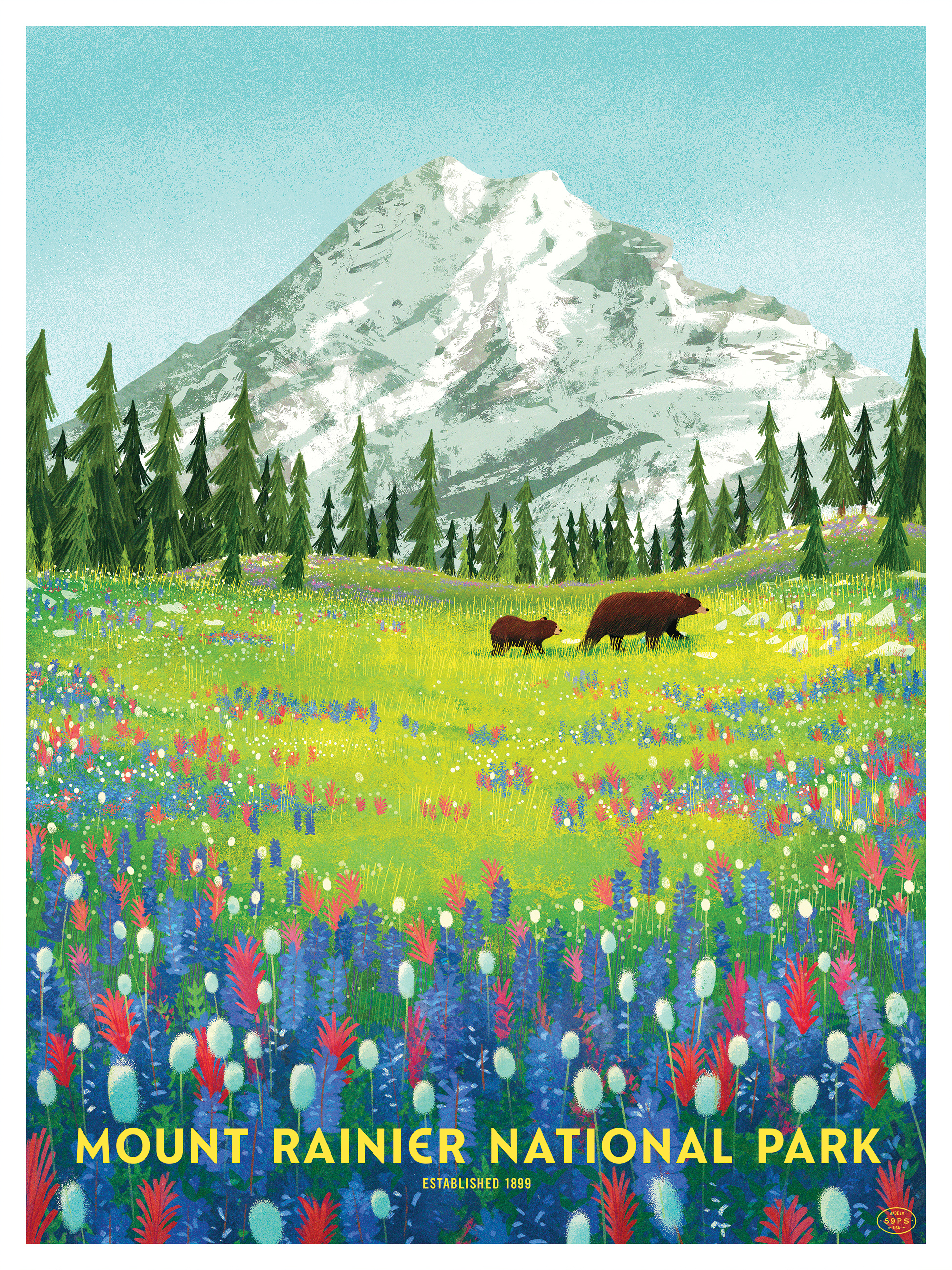
So, how did the 59 Parks Project start?
The Parks Project started out of the National Poster Retrospecticus — that’s a traveling poster show that we did, which featured a bunch of different artists from all over the world, primarily in gig posters and art prints. And after a couple years of touring we opened it up to be movie prints, and posters for pretty much anything at this point. And they’re all printed by hand, so they’re all screen printed or letterpressed.
I’d say about 2014 maybe or 2015, we had the idea to do a series of some sort — pulling from all the artists in the touring show. And that’s where we really ended on the National Parks as something fun to do, something that has a diverse, I’d say, interest from the general population but also within the poster world. We wanted to do something that was appreciated in the poster community but maybe reach a wider audience as well.
And how has the project grown from what it was when you guys initially started? You guys have been doing it for, what, two years?
I think we’re going on our third year, maybe… but I would say it’s grown from just a couple posters in the beginning, and a smaller audience, to this. We’re almost done with the series now. I think we have about six or seven parks that still need to come out. And, you know, the following has grown. We sell out of stuff now, so I would say in that way it has grown — mostly — in the audience and the demand for some of the prints.
But the scope is still about the same, and it’s always been myself full-time, and then working with all the artists, and then my friend Brian Buccaroni, who’s on tour with the poster show quite a bit.
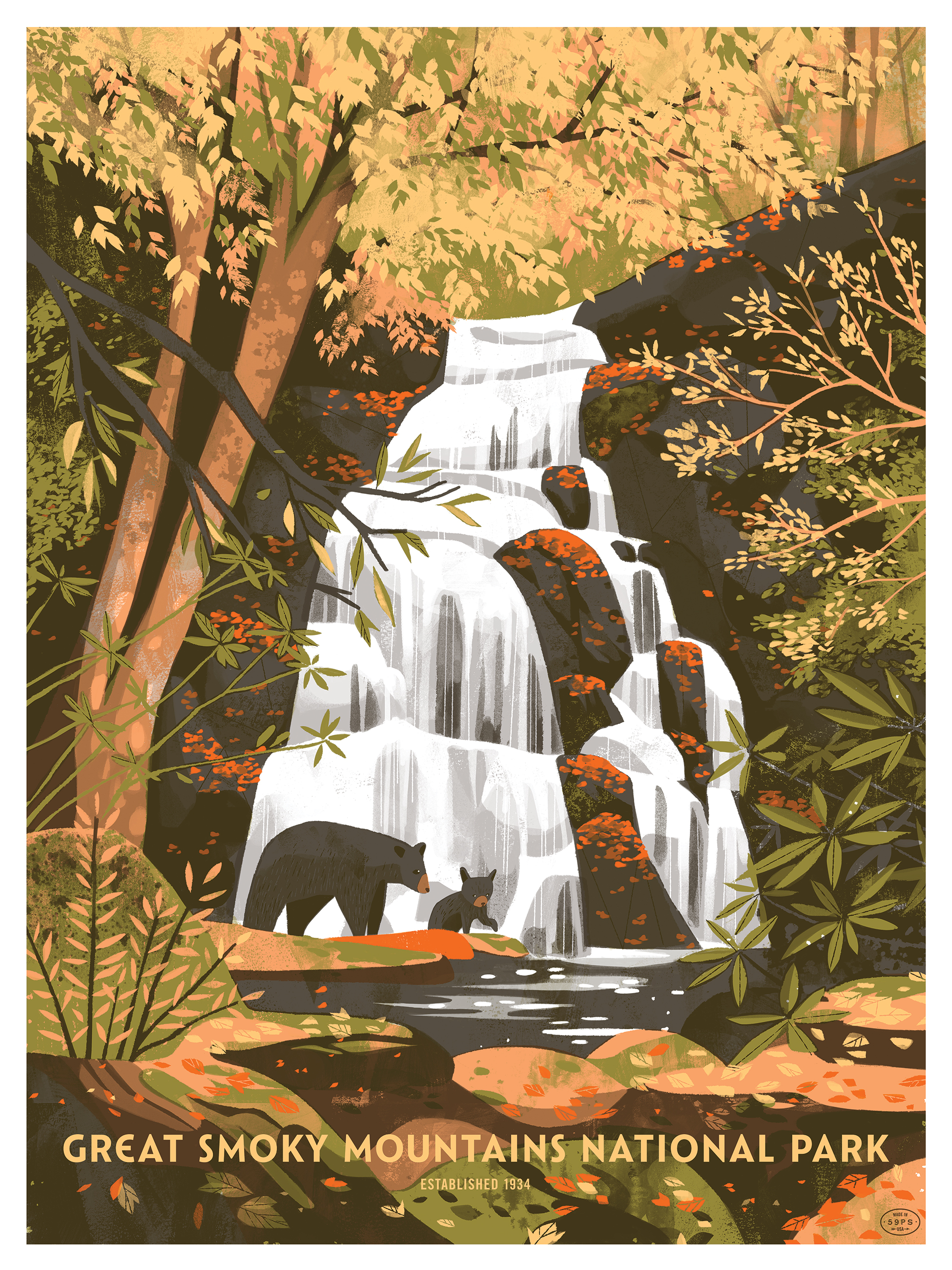
And what’s your personal background?
My background is in setting up art and music events, and also in design. It started in printmaking, making posters myself, oftentimes, for a lot of the events that friends and I would set up, and eventually, that led into a career in web design and front-end development. And somehow I just did all that. The fun stuff I was doing in high school I kept doing on the side, and now it’s kind of switched, where I do all the touring and the poster stuff full-time now.
Awesome! How do the posters help the parks?
Well, I would say just spreading the enthusiasm for visiting National Parks. A thing that we noticed in a lot of our shows in the early days, there would be folks that wanted to see movie posters, gig posters, art prints. And now a lot of our audiences are kind of split in the middle, where it’s people who have never come to a poster show before. So we’ll often have a lot of folks who have never seen prints up close, they don’t even know about screen printing, and they’re getting into it for the first time through the park series, so that’s great.
But on the flip side, a lot of the folks in the poster community, we get emails, or we hear from them at shows, and they’ll tell us how one of their favorite artists made a poster with us, and they’ve never been to a National Park before, but now they just went for the first time because they love the poster so much, or … We hear a lot of great stories where maybe families, like, a son might be into posters, and the mom might be into parks, and now they have something they can share together. Where, you know, they’ll get to go to a park together, and now someone’s mom has posters on their wall celebrating parks. I would say that’s kind of the small, local sort of influence, maybe, through the series.
And then we also donate 5% of each poster sale to the National Park Service … We’re not huge by any means, but the amount that we’re donating each year does keep growing. So that’s something we intend to do indefinitely. And, you know, hopefully just, on this small scale, just keep growing year by year.
So, as a creative director, what do you look for in an artist when you’re seeking them out? Or do they come to you?
It’s a mix, and it can be a challenge, too, because there’s a lot of artists that we love and admire. And, you know, you might notice looking through the series, there’s a common thread throughout that goes beyond just it being an image from a park, but there’s some overlap with aesthetics, too.
So, we’re often thinking about artists that we want to work with, and then which parks are left, and then seeing which ones feel like a good fit for one another. Because some artists are going to get hyper-realistic with it, others are going to be more stylized, and certain parks, or certain scenes, might lend themselves better to a certain artist’s sensibilities.
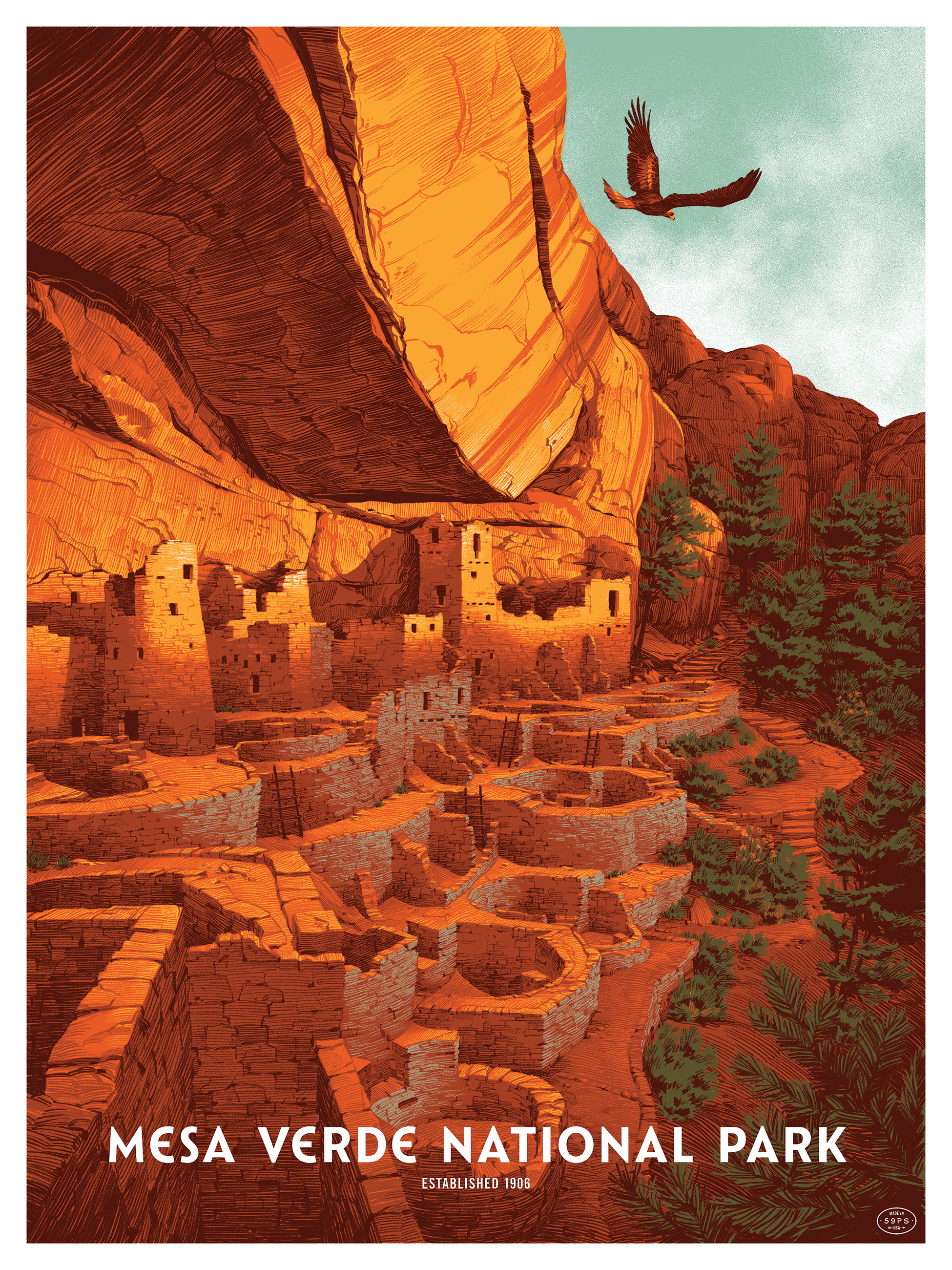
That shared aesthetic is something I’ve wanted to ask about. There’s a lot of different techniques used throughout the posters, and I was wondering what you think that imperceptible thread is that connects them all together? What is it about these that all look so right together even though they’re so different?
Right, and we try not to be, like, too heavy-handed with that, but I really do feel it’s the format. So, they’re all portrait, 18 by 24, screen printed posters. So it’s the format, the medium, and then I would say a big part of it is also the typeface we use, which a friend of ours, Riley Cran, an amazing typographer, created that typeface for us just for the series. So that’s a custom typeface with this project in mind. So I feel like that’s one visual cue.
And then, you know, just the color palettes, and that’s often where, maybe some of my direction comes in, steering certain color palettes a certain way to be representative of the park, but to also fit well within the series.
So, I feel like that and … We are mindful of having, even if it’s the slightest, loosest narrative in each print. So if there’s a hiker, maybe, can you put yourself in their shoes? If there’s an animal, where did it come from? Where is it going? That sort of thing. We often make sure that it’s not just a barren landscape, but there is maybe some loose narrative that the viewer could add to what they’re looking at.
And what made you guys decide on the medium of screen printing? Is that just common in the custom poster world?
Yeah, it’s pretty common, and for us, that’s our background, you know, since high school, and around 1999, 2000, just getting into making event posters for the shows that we would set up. That was the only way to get a colorful print of maybe two or three colors was to screen print it, because copy machines or any of that, it just wasn’t affordable, or it would just have to be Xerox black and white.
So, that’s just something that’s always stuck with us is that tactile feel of the ink on the paper, seeing how each level of ink stacks on top of each other. And for us, that was the mission of the park series is to celebrate printmaking, posters, and also national parks. So, it’s really just the narrative of those two things that we wanted to celebrate, and just get other people excited about …
A lot of the posters are made through some interesting techniques, be it through photography, or certain Photoshop techniques. What has surprised you the most?
I’d say one that stands out, there are many, but the one that really does stand out, if I understand the question correctly, is our Great Sand Dunes poster. Jeremy Spears, who made that one, he’s an illustrator at Disney Animation, and he had this idea of carving all of the elements out of wood.
So, we’d never done anything like that, and he had never done anything like that. So we were a little reluctant, just because we have a release schedule, it’s … really, it’s not cheap to put out a new poster, so experimenting with something, we were a little hesitant about, especially early on.
But he nailed it, and he carved every single element, the sky, the mountains, all the bison you see, those are all carved out of wood by hand. And then he had a friend, who’s an amazing photographer, help him out with shooting each image, and each element, and then compiling it into Photoshop. And then, once the scene was set, we screen printed it.
So, that is, by far, the most unconventional sort of approach to an illustration for one of our posters, for sure.
Which posters are the most popular?
Great Smoky, Rocky Mountain, Sequoia, those are some of the most popular on tour and through the site. But … It’s tough because that skews things, on account of those are some of the most attended parks. So, if a certain park gets five million visitors a year and another gets maybe 500,000, that’s going to skew the popularity.
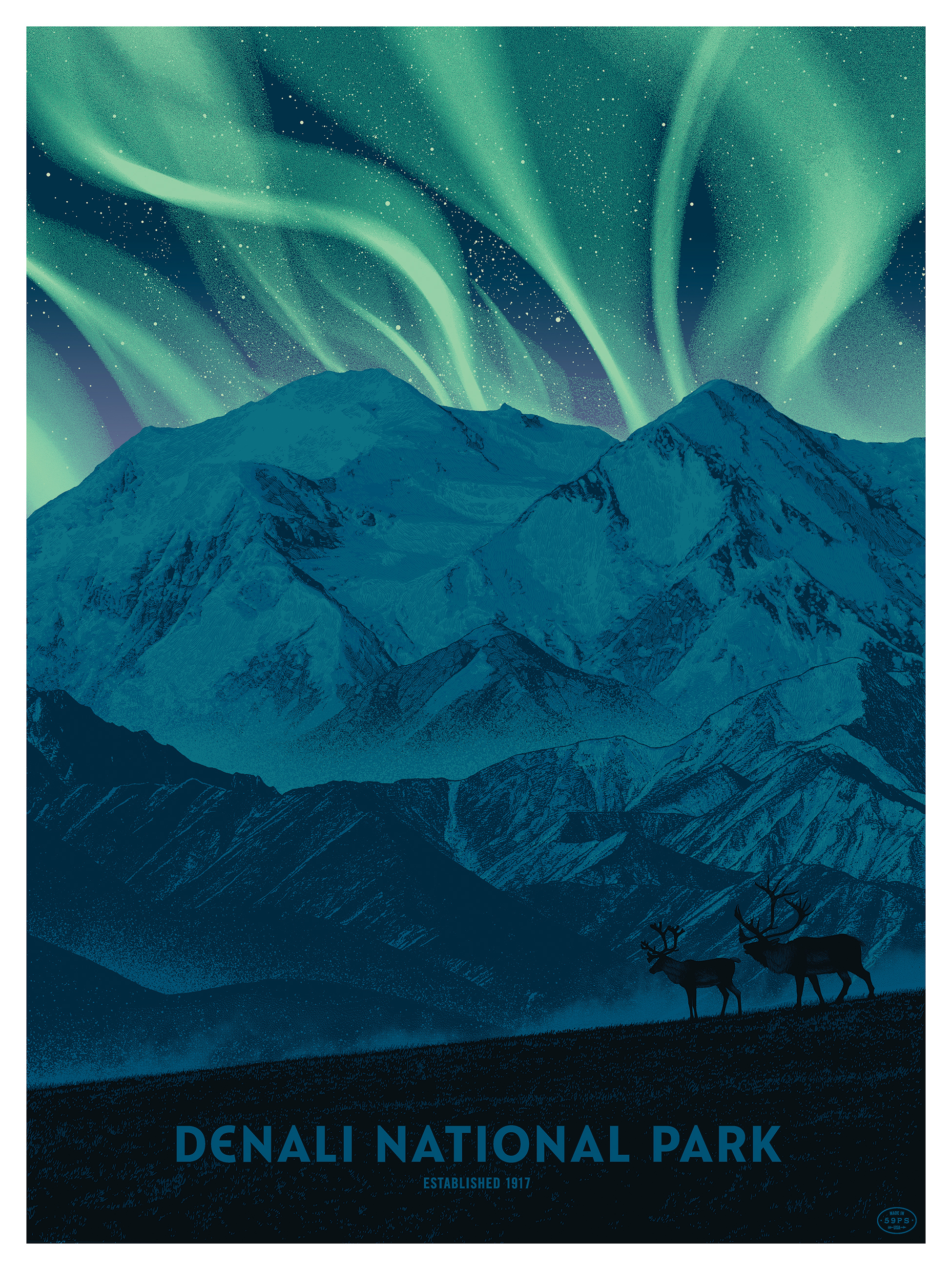
It makes sense that the popularity of the park might factor into why some might sell more than others, just because people might have a personal connection to that park and they’re not buying it from purely an art or aesthetic perspective.
Right. Yeah, I think our Gates of the Arctic poster is a really good example of that, just because it’s a park that gets very few visitors each year, maybe a couple hundred thousand, but online, when that first came out, people were just so excited about it. It’s a beautiful print, beautiful illustration, it’s just not the most popular or most visited park. But that’s kind of our commitment to the series though, throw everything we’ve got at it, even if we know it might not be a bestseller, just because that’s our commitment is to make a poster for every park.
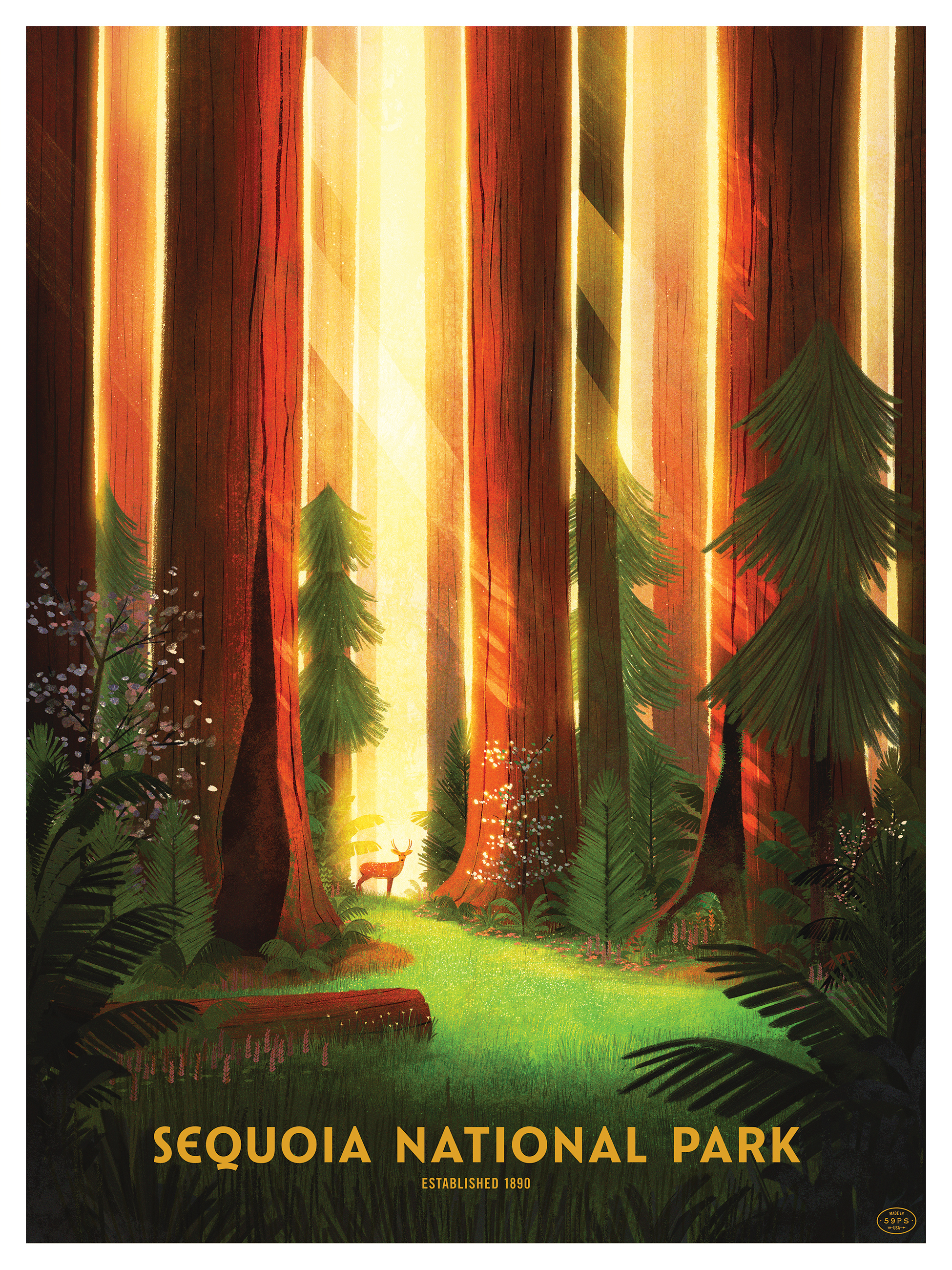
When you guys choose artists, do they have a personal connection to a park? Or is it just purely conceptual, and they’re like, “I think I could really capture something for this.”
You know, it’s often a mix, and I’d like to say that, you know, we get the best work out of artists who have been to parks, but I’ve seen it, artists who are from Australia, or from the UK, who have never been to a US National Park — they do just as an amazing job, and I think they’re just enthusiastic about doing the research, and having not been there they’re discovering some of these places for the first time. But they’re excited to work with us, and we do our best to pair them up with a park that will be a good fit, aesthetically, and fit within their wheelhouse, and some of their interests.
At the same time, there’s a number of parks where the artist definitely, like, grew up going there, so they know all the wildlife, like, they know the name of all, like, the certain trees and things. So, that does help with the research side, because they already have a good backlog of photos and personal insight.
And I think it was our Wrangell- St. Elias poster, Daniel Danger did that one, and I’m probably going to goof this up, but it’s like a … he had a great, great uncle, maybe, who worked at the copper mine that’s featured in that poster, and he had been to the park, so he had some insight to share.
I’ve been to about 40 of the parks, so not all of them, so there’s some that I’m learning from scratch, too. Like, what is the history of the park? What’s the wildlife? The time of year to visit, all of that stuff. So, it’s great when artists do have a connection because it helps to make some of the research easier.
Have any of the posters inspired you more to go to those parks, or are you already set on going to every National Park?
I don’t know if I can make it to every park, just because there’s at least six or seven, I think, in Alaska, and some are so remote. But most of the ones I can drive to I’ve been to, or I will get to soon. But I will say, the Zion National Park poster was one of the first ones that came out, and that hung that on my office wall and I just looked at it every day, and eventually went a couple months later and stood in that same spot, and it was incredible.
One component of the series that we really hope will resonate with folks is just to get them inspired to go to the parks, and it worked on me. I didn’t have plans to be in that area. At the time I really didn’t have a whole lot of money because I had just started to do the park series full-time. But, went on that trip, and it was just super inspiring. And then it was also just amazing to see in person, and have the sense of relief that, you know, I feel like we did it justice, too.
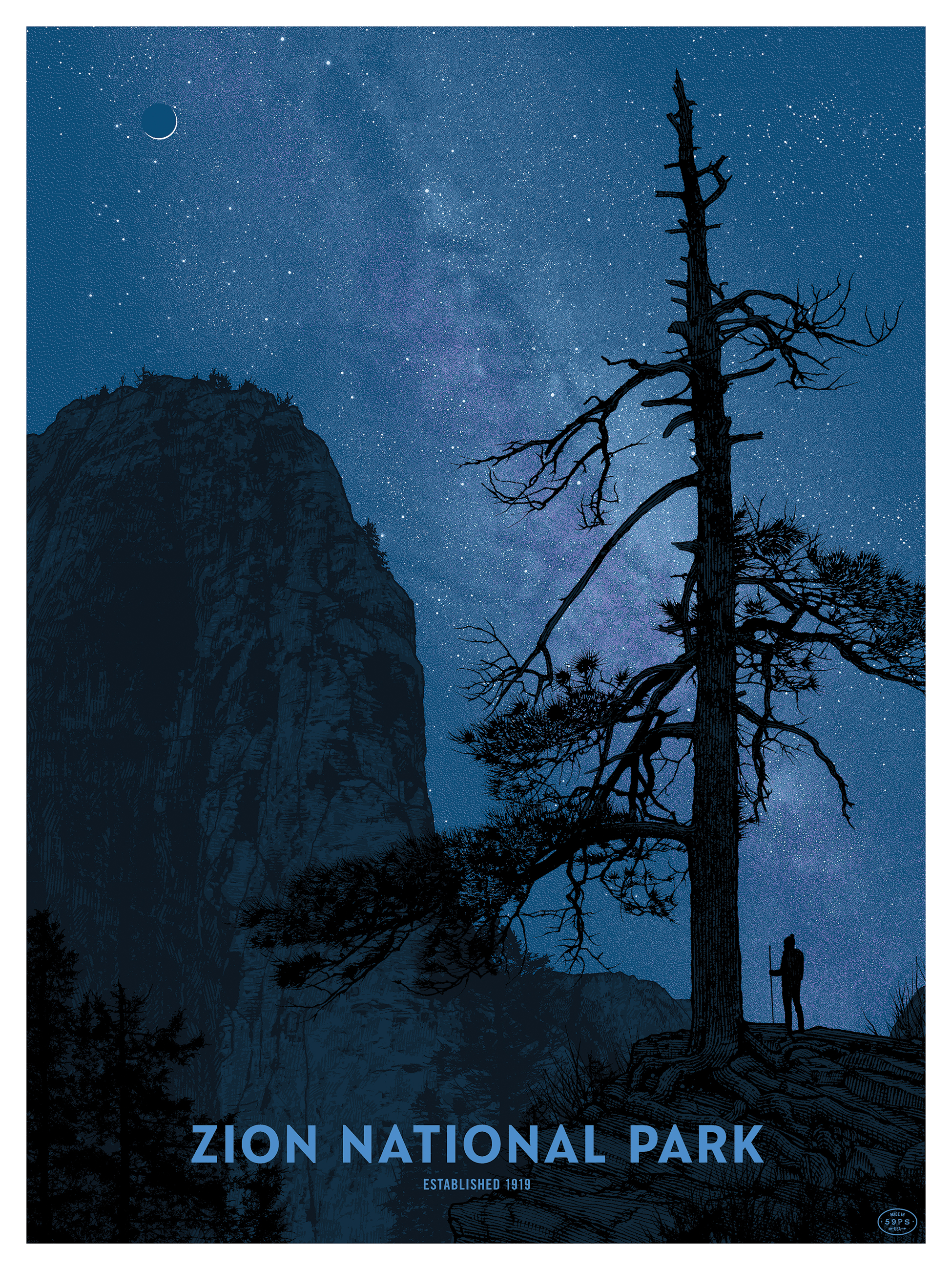
Awesome, that’s great. So since you guys are almost done, what’s next?
We definitely want to do some of the National Monuments. So, we’ll do monuments, probably some state parks, maybe some of the forests. We’re doing a few trails right now.
So that should get us through, I would say, April or May, and then we’ll figure out where we’ll go from there.






